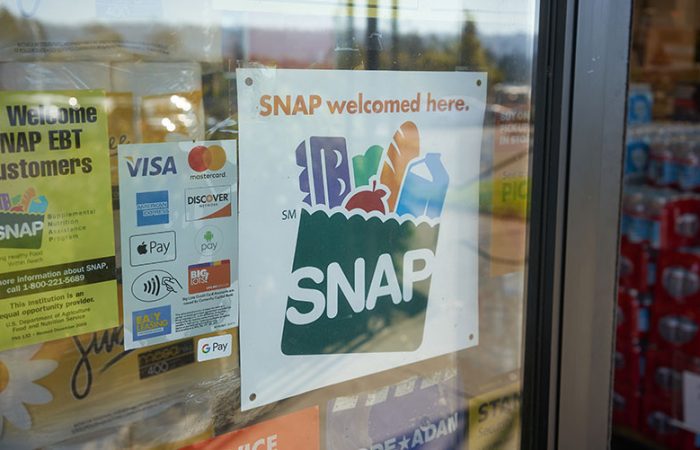Housing is getting more expensive every day and it’s not showing any signs of slowing down soon. Housing makes up for a large portion of people’s monthly spending in the U.S. The Department of Housing and Urban Development (HUD) states that a household should spend no more than 30% of their income on their housing expenses. Households that spend more than that are considered cost-burdened. When a household has such a significant financial struggle, they may find themselves making sacrifices when it comes to other necessary expenses, such as healthcare and proper nutrition. For that reason, a household needs to find support that fits their financial situation.
Housing assistance programs don’t just help people find affordable housing. Some of the assistance programs out there help eligible applicants buy homes. Fortunately, there are multiple assistance programs to consider. It’s important to understand how these programs work and what affordable housing is.
What Is Affordable Housing?
Although the HUD defines affordable housing as housing that costs people no more than 30% of their income, this definition affects people differently. If someone makes $20,000 a month, they should be spending no more than $6,000 a month on housing costs. If someone is making $1,200 a month, their costs shouldn’t be more than $360. Affordable housing costs depend on the income you have.
Popular Housing Assistance Opportunities
There are many options when it comes to housing assistance opportunities. The federal government provides some of these opportunities, however, some private nonprofit organizations do, too. Here’s a list of some of the opportunities to improve your housing situation:
Housing Choice Voucher Program
The Housing Choice Voucher program is an opportunity that helps households through housing choice vouchers (HCVs). This program is funded by the federal government but is run by public housing authorities (PHAs) which is where people can apply. HCVs focus on helping eligible, low-income people afford safe, clean housing. Once approved by the PHA, beneficiaries are responsible for finding a home that not only accepts HCVs but also follows the program’s guidelines relating to cleanliness and safety. The HCV ensures that a portion of the cost is covered on behalf of the family while the family pays the difference. Not every home in the private market will accept these vouchers. Ones that do, will need to meet certain requirements from their local PHA. Those requirements include an inspection that the PHA will conduct on their homes.
Eligibility For Housing Choice Vouchers
The whole point of the program is to help those who need it. For that reason, not just anyone can get their hands on these vouchers. Applicants should also keep in mind that different PHAs may have different requirements. The qualifying criteria are:
- Income Level
- Citizenship Status
- Eviction History
- Family Status
Eligible applicants should generally make 50% or less than their area’s median income (AMI) and should expect to provide certain documents with an application. To learn more about eligibility and documents required for the program, contact your local PHA.
Public Housing
Public Housing is a program that is supported by the HUD but is managed by local housing agencies (HAs). The program offers access to different types of homes such as apartments and single-family houses to eligible recipients at an affordable rate. In this system, HA would essentially be your landlord.
HUD created this program to help individuals and low-income families. HAs will look at three aspects of applicants:
- Income
- Family Status
- Citizenship Status
If you are eligible based on the aspects above, HAs will require references that prove you and/or your family are responsible tenants.
In public housing, the rent you pay is referred to as Total Tenant Payment (TTP). Your TTP is determined by your gross income. If you have more questions but can’t reach your HA, contact your local HUD field office.
Supportive Housing
Supportive housing takes housing assistance to a new level. This housing doesn’t only give eligible people a place to stay but also gives them different services to help them recover from certain challenges they’re going through. Supportive housing can come in different forms, and each form provides a different list of supportive services. For now, we’ll discuss these supportive housing options:
- Transitional Shelters
- Emergency Shelters
- Permanent Supportive Housing (PSH)
- Rapid Re-Housing (RRH)
Transitional Shelters
This form of assistance is a prime example of how supportive housing works. However, the kind of services available as well as the length of stay will depend on which shelter you go to. Eligible occupants of transitional shelters can expect to stay in them for a period of six to 24 months. Homeless people can truly benefit from an opportunity like this, especially because they can receive services that include healthcare, employment, guidance, etc.
Emergency Shelters
Sometimes unexpected disasters occur. These disasters can cause families to be forced out of their homes. Emergency shelters focus on providing short-term stability to these families and may also help these households find longer-term housing. Similar to transitional shelters, emergency shelter services and length of stay depend on the shelter. If you ever need help during one of these disasters, make sure to check out different shelters around you, and see which ones fit your needs best.
Permanent Supportive Housing (PSH)
Permanent Supportive Housing (PSH) focuses on helping people who are homeless. HUD defines homelessness as:
- People who have stayed in an emergency shelter (for at least 12 months, either in a row, or over 4 separate periods over 3 years)
- Applicants who live in housing that is not fit for human living (for at least 12 months, either in a row, or over 4 separate periods over 3 years)
- People who live in safe havens (for the same duration limits as the ones mentioned above)
- People who stay in Institutional Care Facilities (for less than 3 months and have also lived in the options listed above before entering the facility)
Many of the people who receive assistance through PSH have either physical disabilities or mental disabilities. For that reason, long-term assistance provided by PSH can be essential to the betterment of their lives. PSH doesn’t just give housing assistance, the program also provides supportive services to those folks.
Rapid Re-Housing (RRH)
Rapid Re-Housing (RRH) is an example of a “housing first solution.” RRH focuses on people who typically don’t deal with homelessness, known as non-chronic homelessness. RRH mainly provides affordable housing alongside temporary community support services to eligible beneficiaries.
Chenoa Fund
The Chenoa Fund focuses on providing house down payment assistance for people across the nation. The program is available through the CBC Mortgage Agency. The CBC Mortgage Agency is a federally chartered government entity. This agency focuses on individuals that struggle with their credit or income. But those folks are not the only ones who can benefit from the program. Anyone who meets the minimum eligibility requirements of the program receives its benefits. To get these benefits for down payments, applicants need to satisfy the program’s minimum requirements.
Qualifying For The Chenoa Fund
Assistance provided through this program may vary according to the type of home loan that the buyer has. When it comes to a Federal Housing Administration (FHA) loan, Chenoa Fund benefits will require applicants to meet these minimum standards to qualify:
- FICO credit score of at least 620
- Debt-to-income ratio of at most 45%
However, applicants with conventional loans who want to receive Chenoa Fund benefits will need to satisfy these minimum eligibility requirements
- FICO credit score of at least 640
- Debt-to-income ratio of at most 50%
- First mortgage interest rate maximum at 2%
- Have a second mortgage term of 10 years
If eligible for the fund, recipients may receive down payment assistance of up to 3.5% of the house’s value. When received, the loan may come in the form of a forgivable or repayable second mortgage loan option.
FHA Loans
When buying new homes, people may find different assistance options through different resources. Federal Housing Administration (FHA) loans are among some good options to consider. The FHA insures loans that people may receive from private lenders, such as banks. One of the main perks of FHA loans is the low down payment requirements. The program also requires easier qualifications compared to conventional loans. Eligible beneficiaries may be required to provide down payments as low as 3.5%. If an applicant has a FICO credit score of 580 or above, they may be eligible to only need to pay 3.5% as a down payment. For people whose FICO credit scores are between 500 and 579, they may need to provide down payments worth 10% of the home’s value.
FHA also provides a variety of housing loan opportunities, including:
- 203(k) Home Improvement Loans
- Energy Efficient Mortgages
- Home Equity Conversion Mortgages
- Section 245(a) Loans
203(k) Home Improvement Loans: This loan comes with extra money that goes towards home improvement expenses, renovation expenses, and home repair expenses. It is also ideal for people who want to buy a fixer-upper home.
Energy Efficient Mortgages: Eligible applicants will receive extra money from this loan that goes towards handling energy-efficient home improvement expenses that can help lower energy bills.
Home Equity Conversion Mortgages: This program allows elderly folks of 62 years or older to use their home’s equity to access additional funds either through monthly payments or a credit line.
Section 245(a) Loans: This loan starts with low mortgage payments for people who expect their income to increase. Their mortgage payment will increase over time. A shorter loan term is the end result.
Conclusion
Housing is getting more expensive every day. Many people struggle with maintaining safe and stable housing at an affordable rate. However, there are many assistance programs out there for those who need help. It’s essential to know which of these programs fits your situation best. Some opportunities that may be able to help include:
- Housing Choice Voucher Program
- Public Housing
- Supportive Housing
- Chenoa Fund
- FHA Home Loans
The right fit will depend on your current situation. Luckily, you have a variety of options to consider!



